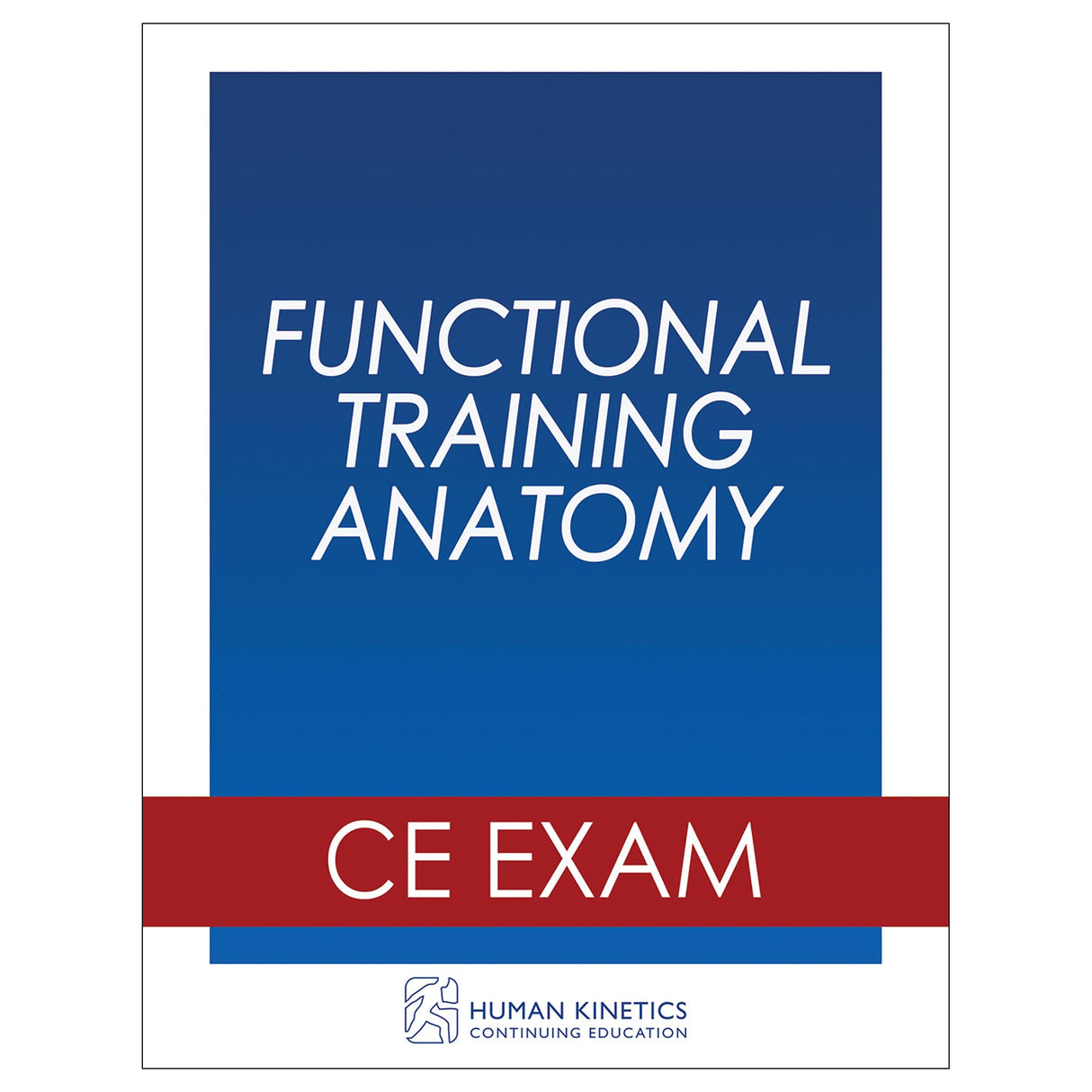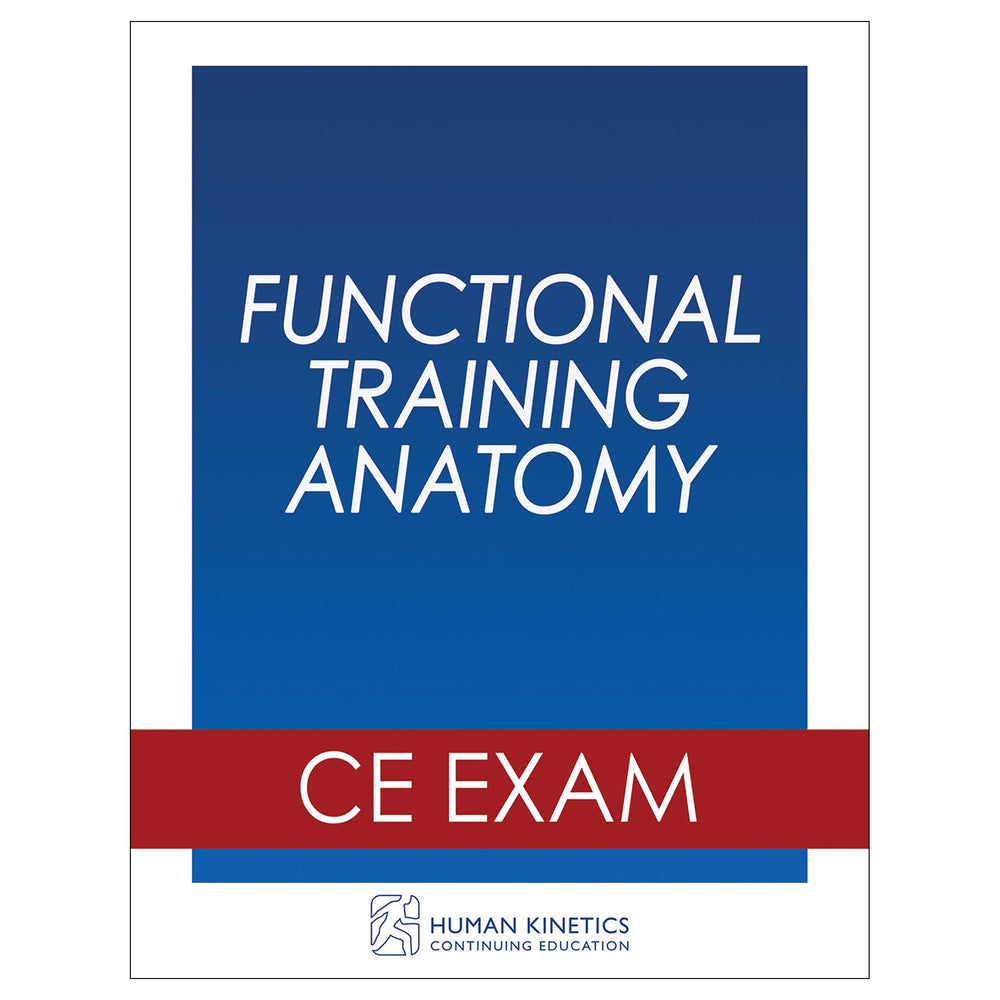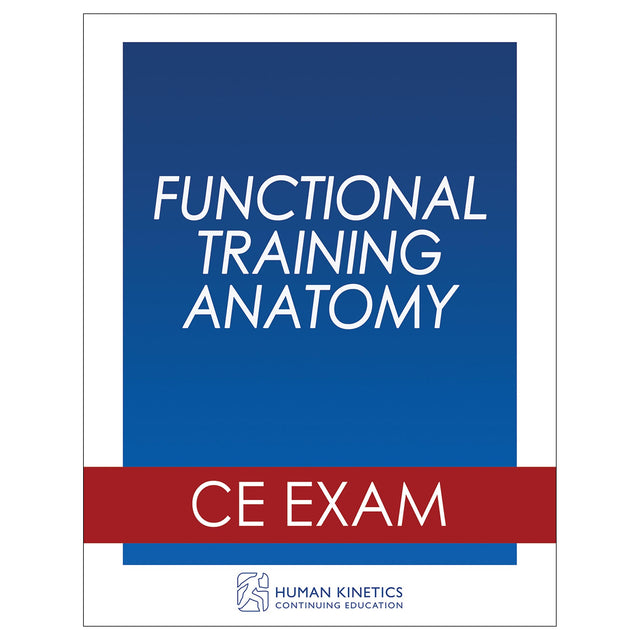Functional Training Anatomy Online CE Exam Without Book
Author: Human Kinetics
$57.00 USD
Human Kinetics strongly recommends that you complete your exam within the calendar year of your date of purchase to ensure approved credits do not expire for your organization.
Consisting of 30 multiple-choice questions, this continuing education exam is designed to be taken after reading Functional Training Anatomy. The exam will test your knowledge of the information presented in the book so you can design effective and efficient training programs that develop power, strength, stability, and functional mobility in your clients and athletes.
Once you pass the exam, you can print a certificate for continuing education credits.
Learning Objectives
- Define functional training and identify the components of a well-rounded functional training program.
- Describe the three planes of motion used to classify human movement.
- Explain the anterior and posterior oblique systems and how to activate them.
- Distinguish between joint mobility, flexibility, and mobility.
- Execute exercises for all types of functional training properly.
- Identify the primary muscles involved in individual exercises for each type of functional training.
- State the functional focus of individual functional training exercises and explain why each one should be used in a training program.
- Define motor control.
- Explain why certain movement preparation exercises are chosen for each training program.
- Discuss the importance of plyometric and medicine ball exercises for the general population and athletes.
- Describe the force-velocity curve and how it can be applied to a functional training program.
- Differentiate the muscle fiber types.
- Recognize the four major categories of upper-body strength movements.
- Describe hip-dominant and knee-dominant movements.
- Explain the importance of unilateral lower-body training.
- Summarize “anti” core training.
- Design a functional strength training program.





